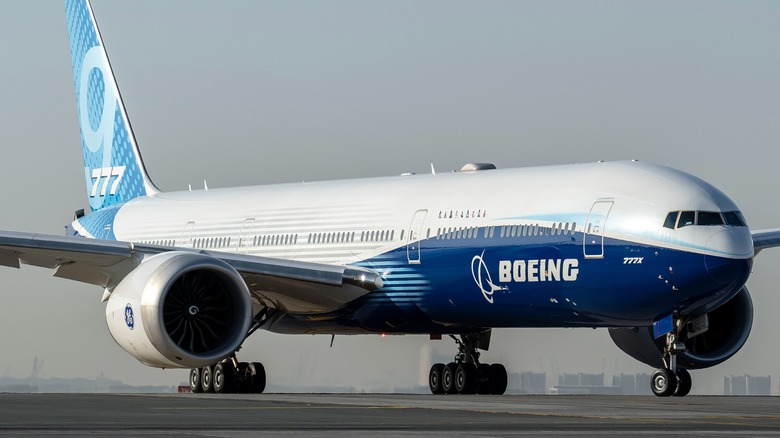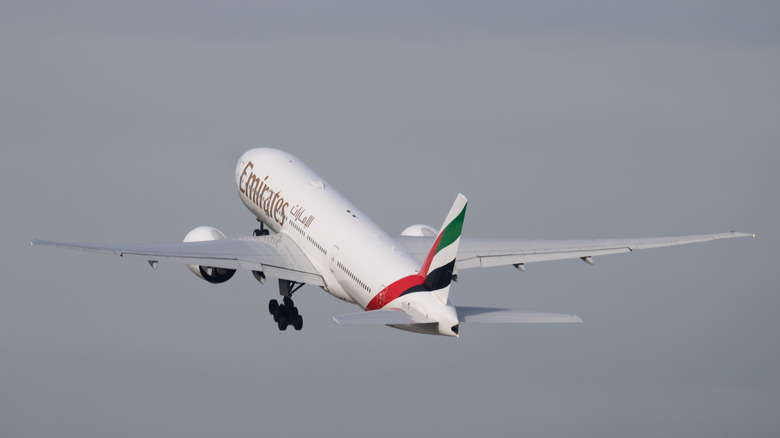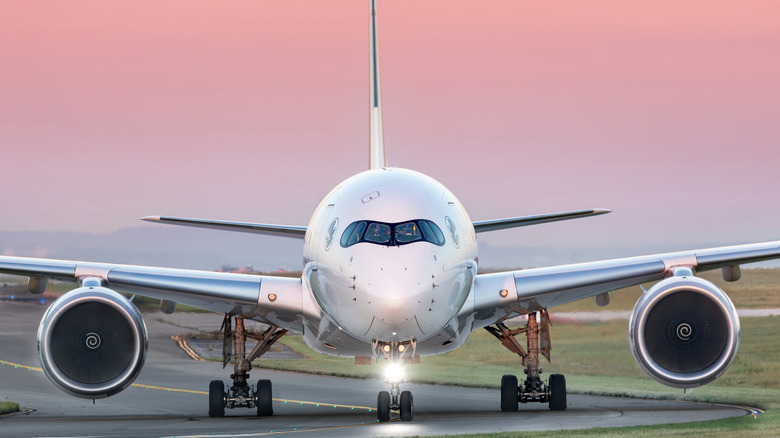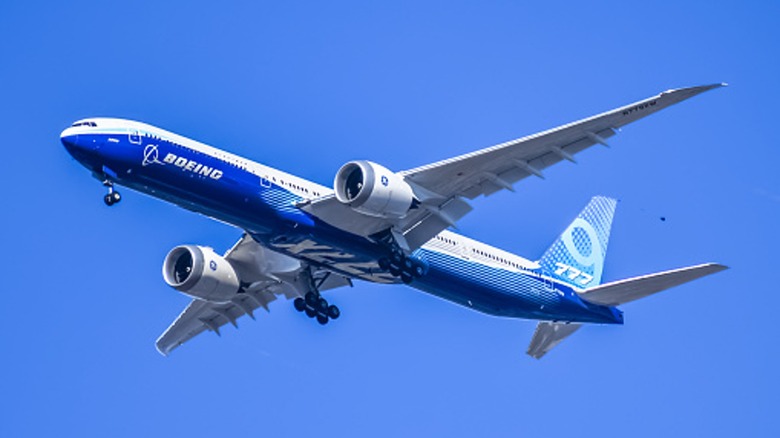Boeing 777 Vs. Airbus A350: How Do These Long Haul Twin-Jets Compare?
The Airbus A350 is regarded as one of the best long-haul planes, giving competitors like Boeing a run for their money. The first Boeing 777 took flight in 1994 with airlines purchasing it for service in '95. Meanwhile, Airbus didn't get its A350 prototype off the ground until 2013, giving it a technological edge over the 777. However, the A350 idea came about after Boeing announced its 787 Dreamliner, with Airbus wanting to make an equally efficient plane. While Boeing has given its line of 777s regular upgrades to keep up with the technology and air travel demands, the aerospace firm is in the process of building new 777 variants that are capable of challenging the A350.
The A350 was a notable upgrade from the company's A330 and A340 by making it more spacious with nine seats abreast versus eight, but more importantly, it was designed as a long-haul aircraft just like the 777. They're also close in width with the A350 being 19-feet and 7-inches and the 777 only four inches shorter. However, Boeing's upcoming 777X will be wider than its Airbus competitor. Lets take a more in-depth look at their range and dimensions to see how they really compare. Plus a few details about the 777X and how it compares to the A350, as well.
There is a line of 777s that are in service
Boeing has three variants of the 777 currently in service: The 777-200LR (Long-Range), 200ER (Extended Range), and the 300ER. While the 777-200LR and 200ER measure 209-feet and one inch in length, the 200LR has a longer wingspan at 212-feet and 7-inches — same as the larger 300ER variant – compared to the 200ER's almost 200-feet. Meanwhile, the 300ER overshadows both in length at 242-feet and 4-inches , letting it seat between 392 and 500 passengers, depending on the seating configuration. Seating arrangements vary drastically for all variants. The 200LR and ER can seat anywhere between 301 and 418 passengers.
Both the 777-200LR and 300ER come equipped with twin GE90-115BL engines that can produce as much as 115,300 pounds of thrust. The 200ER, on the other hand, uses twin GE90-85B engines that pushes out 93,700-lbs. of thrust. It can travel 7,725 nautical miles before it needs to refuel while its 200LR and 300ER counterparts can go 9,395 and 7,930 nautical miles, respectively. The 777 in general is built with a combination of composite materials, aluminum alloys, and titanium alloys to make it lighter.
The Airbus A350 has been the gold standard
Airbus's A350 family of commercial planes are powered by the new Rolls-Royce Trent XWB engines, which are quieter than other engines propelling passenger airlines and highly fuel efficient. There has been a reduction of 50% in noise pollution coming from these engines, which also accounts for it being roughly between five and nine decibels quieter than other aircraft on the tarmac. Its airframe is a combination of titanium, aluminum alloys, and composites – 53% to be exact. The A350-900 can hold anywhere between 300-350 passengers while the 1000 model can carry 350-410 in a typical three-class configuration. However, they could potentially fit 440 and 480 seats, respectively, if they changed up the configuration.
Airbus actually modified its configuration as a means to compete with the 777. The larger A350-1000 is 242-feet long, 23-feet longer than the A350-900. They both share the same wingspan and fuselage width of 212.5-feet and 19.7-feet, respectively. The A350-900 can fly as far as 8,300 nautical miles before it needs to refuel whereas its larger sibling can go 8,700 nautical miles. However, the newest in the A350 family, the A350-900 Ultra Long Range (ULR) can travel non-stop for 9,700 nautical miles, the farthest any currently active commercial plane can fly.
Boeing's next-generation 777 will be more competitive
The Boeing 777X isn't in commercial use yet, but it has two variants: the 777-8 and its larger sibling 777-9. Both Boeing planes are twin-aisle, wide-body models with twin GE9X engines from GE Aviation. The 232.6-foot 777-8 can hold as many as 395 passengers for 8,745 nautical miles. The larger 251.9-foot 777-9, on the other hand, with a typical two-class configuration will carry 426 passengers with 10 seats across in its economy class. However, it's larger stature can only travel 7,285 nautical miles before it needs to top off on fuel.
Boeing is trying something new with the 777X design, giving it folding wingtips, a first in commercial aviation. Folding wingtips have been a common feature on U.S. Navy planes, such as the F/A-18 Super Hornet, as a means to conserve space on aircraft carriers. A 235-foot and 5-inch wingspan is pretty limiting in terms of where the plane could fit. It's too much for many airports. With a folding mechanism, the 777X can reduce its wingspan to 212-feet and 9-inches, allowing it to fit at any gate at any airport. Boeing could have simply kept the wings at 212-feet without needing them to fold, but the company claims it offers better aerodynamics than its competitors.



